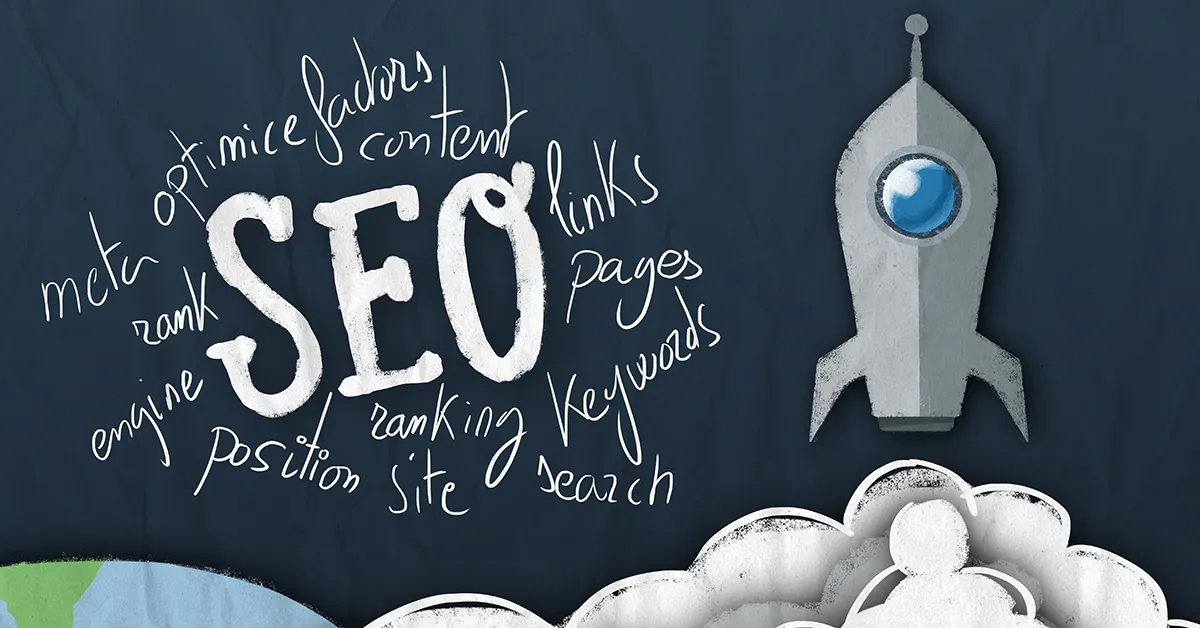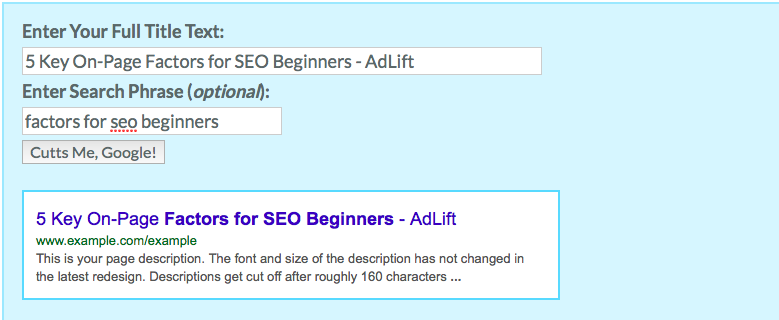5 Key On-Page Factors for SEO Beginners – AdLift

You’ve said it before: “this year I’ll get my site up to par so I can improve my search rankings and see an uptick in business.” But for some reason the plan never sticks. Either other tasks get in the way or confusion sets in when it comes time to roll up your sleeves and get to work. It’s understandable; the SEO well runs deep. There are literally 200 different ranking factors that Google incorporates into its algorithm. But if you try to do too much too soon, you’ll never get anywhere.
As an SEO agency, we know a thing or two about organically optimizing pages. Not only to improve rankings, but also user experiences. So let’s take a look at the five key on-page factors all SEO beginners can target to improve their own site.
Create Content for Eyeballs, Not Spiders
Creating content, and especially evergreen content, is a perpetual beast. The first and most basic tenet of content is to provide value to your readers. You can naturally fit all the keywords you want into a blog article, only for the finished product to be stale, or even spammy. Rock solid content informs, stays on topic, and is unique.
Content trends are shifting toward longer form pieces as well. Though 300-500 is still the minimum word count to hit for a piece of content to be deemed worthwhile, Google definitely favors longer form content. This doesn’t mean you should overwrite and expect to be rewarded. But if you’ve bitten off an in-depth topic, and aren’t filling your articles with empty sentences, your site will achieve a higher authority because you’re providing quality content prospective users should find valuable. Content should also be integrated with media. Sadly, very few Internet readers want to take in a 1,500-word article with no images, videos, gifs, or anything else. Make your content as digestible as it is informative and you’ll see higher engagement as a result.
The last thing you need to do is keep your content narrow. Writing a 400-word blog post on a super broad topic isn’t going to yield much value to readers compared to a 1000 word post on a much narrower topic. Picking narrower topic ideas also preserves more content ideas for the future. And when you’re trying to establish your blog as an authority, it’s essential to post on a regular basis. Narrower topics lend more mileage to your blog.
Entice with Title Tags
Title tags are what you see on search engine results pages that give you a preview of what each page is about. Title tags show up on the top of a browser tab and usually as the anchor text on social media sites, making writing a relevant but also enticing tag crucial to organic search. Title tags are important for persuading users to click a page, but also to provide the search engine with an accurate description of what the page is about.
You’ll want to structure your title tags by listing your primary keyword, as well as any secondary keywords (if they fit naturally) and then your brand name. Title tags should generally be kept between 50 and 60 characters, and at the maximum, 65. If the end of your tag is your company name, it’s fine if it cuts off. Moz has a nifty title tag preview tool (pictured below) so you can test how your titles will appear before you publish.
Moral of the story with title tags: make them relevant for search engines to glean what the page is about, but enticing enough to persuade humans. After all, they’re the ones that will be doing the clicking.
Clean up those URLs
Always, always, always optimize URLs on your website. The process doesn’t require much time or effort, and when done right, gives humans and search engines an idea of what the site and page is all about. As a rule of best practice, keep your URLs under 100 characters, separate each word with a hyphen and include the relevant keywords your page is about. Well-optimized URLs properly reflect the order of information on your site. So if you’re having trouble deciding if you’ve optimized well enough, think of it from a filing perspective: does each directory progression and destination make sense for how the site navigates?
Here’s a good URL: http://www.widrfm.org/meet-the-directors
Here’s a not-so-good URL: http://www.widrfm.org/?page_id=1827
Unfortunately, the not-so-good example is the working link.
Write Descriptive Heading Tags
The idea of heading tags is simple: splice up the heading of a page from all the content. The most important heading tag is the h1, which at times, will also be your title tag. Heading tags are numbered one to six, in order of relevancy. Think of your h1 tag as the main heading of your page, the h2 as the next heading that comes in your post, and so forth down the line. Great heading tags tell search engines what an entire page is about, but also how the content is transitioning within a piece. Each heading tag you write should be descriptive, and if natural, contain keywords. Once again, we’re writing for people first, but with search engines in the back of our minds.
Optimize Image Alt Tags
This last on-page factor gets breezed over a lot in beginner SEO efforts, but taking the time to write image alt tags can make a big difference. Writing alt image tags provides info for visitors who’ve disabled images on their browsers, and tells search spiders what a page is about. It’s also a great way to be found on Google Images while still hammering home the relevancy of the accompanying text on the page. Write your alt image tags as you would for a blind person browsing your site. Keep them simple, descriptive and relevant.
Paying close attention to these five on-page factors can do miracles for the user experience and search engine rankings of your site. If you want to take a closer look at the full, nuanced scope of SEO, check out this insightful periodic table of SEO success factors by Search Engine Land.
The search marketing realm is an ongoing game, requiring constant iterations and updates to all your site’s pages to stay relevant. But you’ll never become a Google-friendly site if you don’t just get started.
Have questions or comments to add? We’d love to hear about what SEO efforts you’ve taken thus far. Give us a call today at 1-650-409-1500 to see what our award-winning digital marketing agency can do for you.


